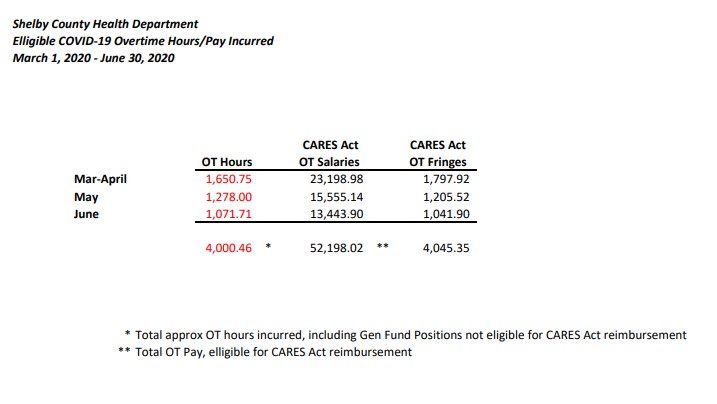MEMPHIS, Tenn. — Four thousand hours. That’s how much overtime the Shelby County Health Department has racked up since the COVID outbreak started, although that count may not be painting an accurate picture.
Since the first person tested positive for COVID-19 in Shelby County back in March, it’s been “all hands on deck” at the health department.
“That weekend that we had the first case, we have not stopped,” Health Director Dr. Alisa Haushalter said. “That means seven days a week. Every holiday. For periods of time working two shifts and some people working extended days, 12-hour days.”
And that adds up, in terms of overtime.
In March and April, employees racked up more than 1,600 hours. Then in May, another 1,300 hours. Add another 1,000 hours in June.
That totals more than 4,000 hours, and that doesn’t even include employees who are salaried.
Haushalter said the real total is far more than that. For the employees who are paid hourly, that goes into the system as overtime.
The majority of those hours are spent dedicated to contact tracing, Haushalter said, finding out who the infected person came in contact with and getting them to quarantine or isolate.
Much of the rest is spent on enforcement, making sure everyone is following the health directives. She said staff also offers support and also works with vulnerable populations like nursing homes to combat outbreaks and prevent any more from happening.
The cost for the overtime is more than $50,000, but the health department states it is eligible to get that money back from the federal government through the CARES Act.

The feds are also picking up the bill to temporarily expand staff at the department by 141 positions. Haushalter said a majority of those spots have been filled and many new employees have already started.
“All of those being have been oriented on contract tracing and are being coached and mentored by more seasoned staff,” Haushalter said.
And she says that’s still not enough manpower .
“We added 141 people, but we are ultimately looking to get to 200-250 potentially, so we have more contact tracers and we are exploring different ways to do that,” she said.
The department could adjust the requirements to be a contact tracer, so a student could help a couple of hours a day, for instance.
“That would get us more tracers but also get us people exposed to public health,” she said.
Haushalter said federal dollars will also cover that, and will help reduce overtime.
She said the work is far from over and her team isn’t letting up.
“Every day our staff show up very committed and dedicated but the majority of the public don’t know what they do or that they’re doing it 7 days a week,” Haushalter said.
















